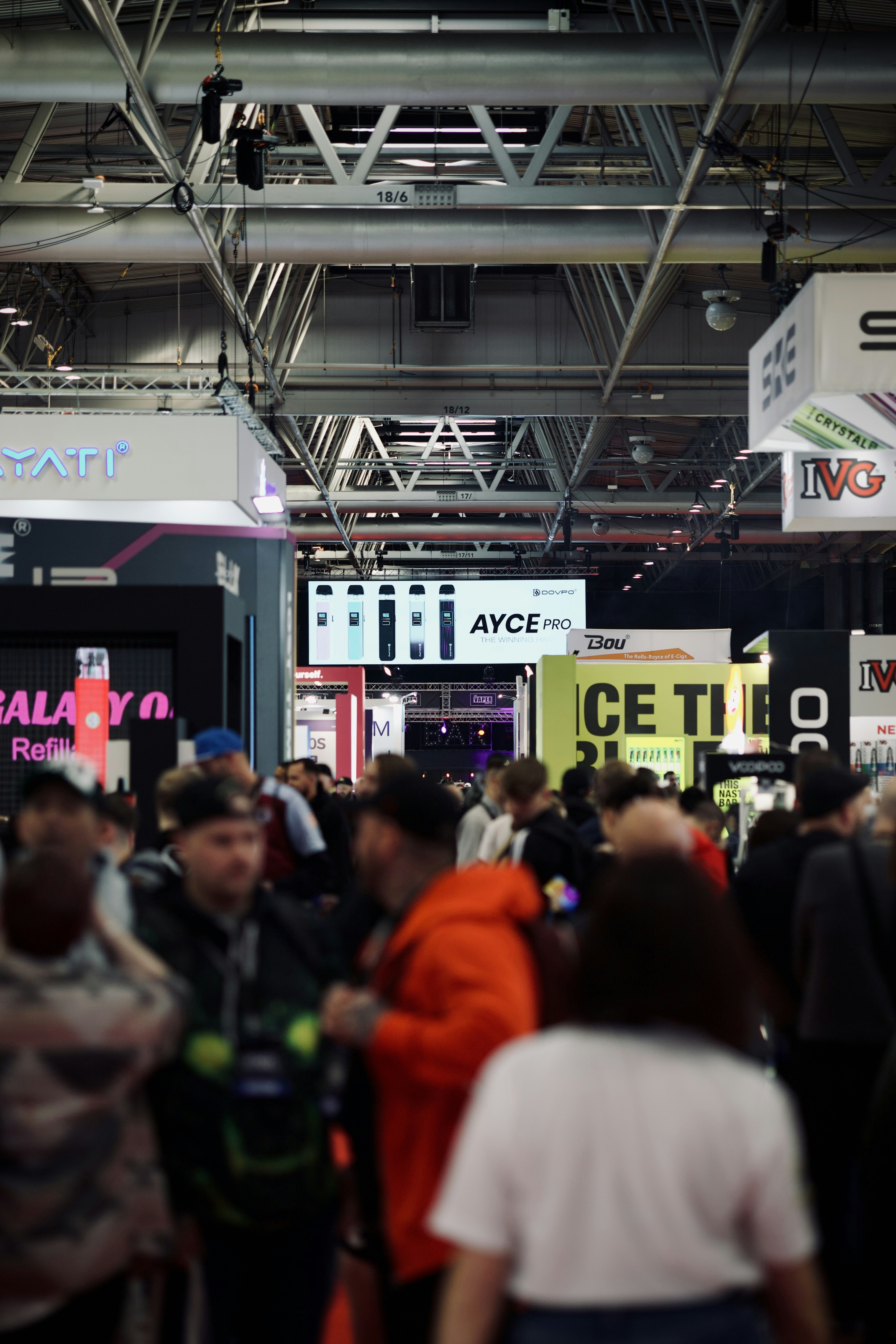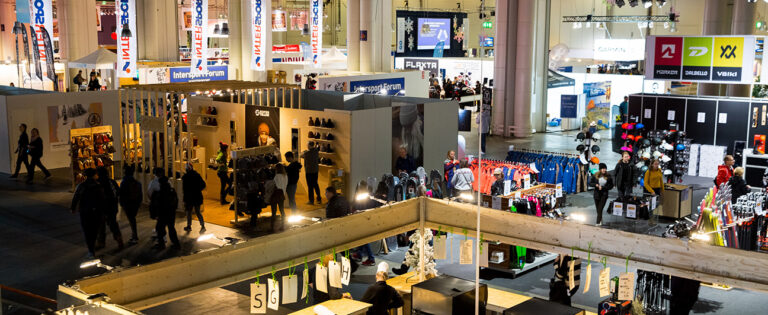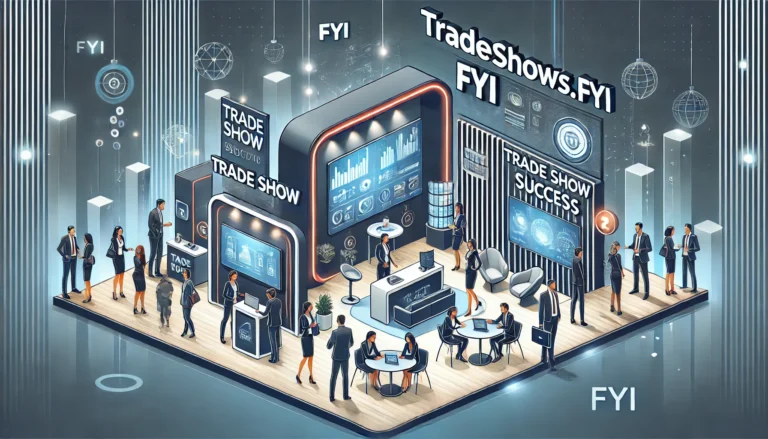
Introduction to Trade Shows
Trade shows serve as significant events in various sectors, acting as a focal point for businesses to display their products and services, connect with industry professionals, and forge meaningful relationships. Generally organized around specific industries, trade shows bring together manufacturers, distributors, retailers, and potential customers in one location, creating an atmosphere ripe for networking and collaboration. They allow participants to tap into the collective expertise of a diverse group, sharing knowledge and insights that can aid business development.
The significance of trade shows cannot be understated; they provide a platform for companies to showcase innovations, launch new products, and elevate brand visibility. This environment enables businesses to gather feedback directly from potential customers, a feature not available in most other marketing strategies. Furthermore, trade shows present unique opportunities for companies to observe competitors, understand market trends, and assess customer preferences, all vital elements in shaping a successful marketing strategy.
Different types of trade shows cater to various aspects of industry engagement. For instance, some focus on specific product categories—like electronics, fashion, or health—while others balance product showcases with educational seminars or workshops. These events not only facilitate product discovery but also foster discussions around industry developments, best practices, and technological advancements, enhancing participants’ knowledge base and operational capabilities.
In essence, trade shows are invaluable opportunities that go beyond mere exhibitions. They are integral in fostering business relationships, sharing market insights, and creating an environment conducive to strategic networking. As attendees navigate these events, the trade show advice they gather can prove essential in elevating their companies and optimizing their participation in future events.
Exhibiting at Trade Shows: The Essentials
Exhibiting at trade shows requires thorough planning and execution to effectively promote your business and engage with potential clients. The first step in this process is establishing a clear plan and budget. It is critical to define your objectives, such as generating leads, building brand awareness, or launching new products. This clarity will guide your financial decisions, helping you allocate resources effectively across various elements such as booth design, promotional materials, and staff travel expenses.
Booth design is another essential consideration in your trade show preparations. An aesthetically pleasing and practical display can significantly attract attendees. Incorporate engaging elements such as visuals, interactive components, and digital screens showcasing your offerings. Ensure your booth layout promotes easy traffic flow, allowing visitors to navigate comfortably as they interact with your representatives and brand. Additionally, implementing clear branding will help reinforce your message and leave a lasting impression on visitors.
Attracting attendees to your booth requires strategic marketing efforts before and during the event. Utilize social media platforms, email campaigns, and even pre-show advertisements to inform your target audience about your presence. Offering incentives like giveaways, contests, or exclusive event promotions can draw more visitors and encourage engagement at your exhibit.
Once the event is underway, actively engage with attendees by inviting them to provide feedback or take part in demonstrations. Creating memorable experiences will keep your brand top of mind long after the show concludes. Lastly, measuring the success of your exhibition is paramount. Evaluate metrics such as lead quality, follow-up engagement, and overall brand visibility. Collect feedback from your staff and attendees to fine-tune future trade show strategies.
By taking these trade show tips into consideration, businesses can navigate the complexities of exhibiting with confidence, ensuring a successful presence at trade shows.
Organizing a Successful Trade Show
Organizing a successful trade show requires meticulous planning and execution. The first step is selecting the appropriate venue, which should align with the goals of the event and accommodate the expected number of attendees. Considerations such as location, accessibility, and facilities play critical roles in this decision. A venue with ample parking and nearby accommodations can enhance attendance and offer a better experience for both exhibitors and visitors.
Once the venue is secured, managing vendors becomes paramount. This includes securing catering services, audiovisual equipment, and booths for exhibitors. Maintaining clear communication with vendors ensures that all logistical aspects run smoothly, thus enhancing the overall atmosphere of the trade show. It is also beneficial to create a timeline for vendor deliveries and set up times, allowing for any last-minute adjustments if necessary.
In addition to logistical elements, effective marketing strategies are crucial for the success of a trade show. Using a multi-channel marketing approach—incorporating email campaigns, social media promotions, and traditional media—can help target the right audience. Early marketing also builds excitement and anticipation among potential attendees. Providing incentives, such as giveaways or exclusive sessions, can further motivate attendance and engagement.
Furthermore, leveraging technology can significantly enhance attendee experiences. Consider using registration software for seamless check-ins, or mobile apps that allow attendees to navigate the event, schedule meetings with vendors, and access real-time updates. These tools can augment the effectiveness of your trade show and ensure that it meets the needs of all participants.
Organizing a successful trade show involves a careful balance of venue selection, vendor management, effective marketing strategies, and technological innovation. By following these trade show tips, organizers can create an engaging environment that delivers value to attendees and exhibitors alike.
Attending a Trade Show: Maximizing Your Experience
Attending a trade show can be a pivotal opportunity for personal and professional growth. To maximize your experience, it is essential to approach the event with a clear plan and purpose. Preparation is key; start by setting specific goals for what you wish to achieve during your time at the trade show. Whether it is to learn about new industry trends, connect with potential clients, or discover innovative products, having defined objectives will guide your activities effectively.
Once you have established your goals, conducting thorough research on the exhibitors and sessions is vital. Familiarize yourself with the companies that will be present, particularly those that align with your interests and industry needs. Create a prioritized list of booths you want to visit and sessions you wish to attend. This proactive approach not only saves time but also ensures that you do not miss out on significant opportunities for engagement and learning.
Effective networking stands as one of the cornerstones of trade show success. Be prepared to introduce yourself and articulate your interests concisely. Attend networking events, participate in workshops, and engage with fellow attendees during sessions. Carry business cards and take advantage of technology, such as mobile apps and social media platforms, to connect with others. Approaching networking with an open mindset will enhance your ability to establish meaningful relationships.
Finally, do not overlook the importance of following up after the trade show. Send personalized messages to the contacts you met, expressing your appreciation for their time and outlining any mutual interests discussed. Staying connected can lead to fruitful collaborations and opportunities in the future. In conclusion, by preparing adequately, researching attendees and exhibitors, networking effectively, and following up thereafter, you will be well-equipped to maximize your trade show experience, ensuring a fruitful outcome for both your professional and personal development.
Traveling to Trade Shows: Tips and Tricks
Traveling to trade shows requires careful planning and consideration to ensure a smooth and successful experience. One of the primary aspects to address is transportation. Depending on the location of the trade show, consider making arrangements for different modes of transport, such as flights, trains, or driving. Early bookings can often secure better rates and availability, which is particularly helpful during busy trade show seasons.
Accommodation is another critical element of your travel strategy. It’s advisable to book hotel rooms as early as possible, ideally near the venue, to minimize transportation challenges on the day of the event. Furthermore, researching hotels that offer shuttle services to the trade show can be a strategic move, as it can save time and reduce overall travel stress. Consider amenities such as free Wi-Fi or breakfast, which can prove beneficial during hectic travel schedules.
Packing appropriately is essential for any trade show event. Create a checklist that includes items like business cards, promotional materials, comfortable shoes, and professional attire suitable for networking. Additionally, including essential tech items such as chargers and portable power banks can help ensure that devices stay operational throughout the event. Don’t overlook opt for portable displays or samples, if necessary, that can draw attention to your booth and facilitate meaningful interactions.
Preparing for unexpected scenarios is also crucial when attending trade shows. This may involve having a backup plan for transportation, knowing alternative routes, or packing additional clothing in case of unforeseen weather changes. Having trade show advice readily available through online forums or professional networks can provide insight into travel experiences from those who have attended similar events. By following these travel tips, you can enhance your overall trade show experience and make the most out of your time at the event.
Shipping Trade Show Exhibits and Displays
Successfully exhibiting at a trade show requires meticulous planning, particularly when it comes to the logistics of shipping trade show exhibits and displays. First and foremost, it is essential to establish a timeline that accounts for all phases of shipping. This includes not only when the exhibits will be shipped but also when they need to arrive at the venue. Ideally, shipments should be scheduled well in advance as unforeseen delays can arise due to local regulations or transportation issues.
Cost is another key consideration in the shipping process. It is advisable to obtain multiple quotes from shipping companies to ensure you are receiving a competitive rate. Participants should also consider additional costs, such as insurance for the exhibits against damage or loss during transport. As exhibiting at a trade show often involves high-value assets, safeguarding those investments is crucial.
Dealing with customs and regulations is an integral part of shipping to trade shows, especially when crossing international borders. Exhibitors should familiarize themselves with the specific regulations of the destination country, including relevant tariffs or restrictions related to imported goods. Preparing all necessary documentation in advance, such as invoices and packing lists, can streamline this process and avoid potential setbacks.
Avoiding common shipping pitfalls can save both time and money. It is vital to ensure that all exhibit components are labeled correctly and secured for transport to prevent damage. Using sturdy packing materials can minimize the risk of breakage. Additionally, keeping an open line of communication with the shipping company can help manage expectations and address any issues that may arise promptly.
By taking these logistics into account, exhibitors can navigate the complexities of shipping trade show displays and ensure a smooth experience from departure to arrival at the event.
Dealing with Show Services and Logistics
Understanding the various show services provided by trade show organizers is essential for exhibitors aiming to create a successful presence at any event. These services encompass a range of logistical considerations, including essential provisions like electricity, internet access, and furniture rental. Prioritizing these elements can significantly enhance the overall exhibition experience.
Firstly, ensuring reliable electrical service is fundamental. Exhibitors should evaluate their power needs, which can range from basic lighting to powering multiple electronic devices such as screens and computers. It is advisable to consult the event’s guidelines to determine the available electrical options and vendor contacts. Failing to address power requirements can lead to disruptions during the show, highlighting the importance of planning ahead.
Secondly, internet connectivity is an increasingly vital component in today’s digital landscape. Reliable Wi-Fi or a hardwired internet connection can facilitate real-time engagement with attendees and allow exhibitors to showcase their products effectively. It is recommended that exhibitors communicate with the event organizers regarding the recommended service providers and ensure that internet access aligns with their specific needs. This advance planning can prevent potential connectivity issues that might arise during the show.
Another critical aspect involves furniture arrangements and booth design. Booth space can typically be customized according to the exhibitor’s branding and aesthetic goals. Coordinating furniture rentals, such as display counters, seating, and storage solutions, with the right show service provider allows exhibitors to create an inviting atmosphere. It is best to keep in mind any logistical constraints that may impact the setup process, such as space limitations or rules imposed by the venue.
In conclusion, effective coordination with show service providers is paramount for a seamless trade show experience. By proactively addressing electrical, internet, and furniture needs, exhibitors can ensure that their presence is both impactful and memorable.
Event Scheduling and Agenda Planning
Effective scheduling and agenda planning are crucial components of successful trade show participation. It is imperative for both exhibitors and attendees to allocate their time efficiently to maximize their experience. First, exhibitors should create a booth schedule that outlines who will be present at different times during the trade show. This not only ensures that there is coverage at all times but also allows team members to have the opportunity to explore the event themselves, attend relevant sessions, and engage in networking opportunities.
When planning speaker sessions, it is essential to identify key topics that will resonate with your audience. Consider coordinating with industry experts to offer sessions that provide valuable insights and attract attendees. Be mindful of timing; avoid overlapping with major keynote presentations and prioritize high-traffic times, such as the start of the day or right after lunch. Incorporating interactive elements into these sessions can further engage the audience and make your booth stand out.
Networking events are another crucial aspect of trade show success. Strategically scheduling these events can lead to fruitful connections. Utilize social media platforms and event apps to promote meet-and-greet opportunities, and consider informal settings like breakfasts or happy hours. This not only encourages interaction but also fosters relationships that can extend beyond the duration of the trade show.
Ultimately, by focusing on effective scheduling and comprehensive agenda planning, you can enhance the experience for both exhibitors and attendees. Always remain flexible and adapt plans as needed, since unforeseen circumstances can arise. Implementing thoughtful trade show advice regarding timetable organization will help ensure that everyone can achieve their objectives at the event.
Post-Show Follow-Up: The Next Steps
After the conclusion of a trade show, the real work begins with the essential task of follow-up. Effective post-show activities are crucial for both exhibitors and attendees, as they offer an opportunity to nurture leads, strengthen relationships, and maximize insights gained from the experience. One key aspect of trade show advice is recognizing that the connections made during the event can significantly influence future business endeavors.
For exhibitors, timely follow-up is vital. Sending personalized emails to leads within a few days post-event is an effective strategy. These emails should reference specific conversations or interactions had during the show, making them feel relevant and personalized. This helps foster a sense of trust and keeps the dialogue open. Furthermore, consider segmenting the leads based on interest level or category, allowing for more tailored communication. Offering exclusive content, such as white papers or webinars, can also be a powerful way to maintain interest and engagement with potential clients.
Attendees should also take advantage of post-show opportunities. Revisiting business cards and notes collected during the event is an essential part of this phase. Reach out to exhibitors of interest, thanking them for their presentations and inquiring further about their products or services. This not only reinforces the connection established at the trade show but also opens doors for valuable information exchanges relevant to one’s business needs.
Additionally, leveraging social media platforms to share insights or experiences from the trade show can enhance visibility and help maintain relationships with fellow attendees and exhibitors. These post-show activities are pivotal, allowing both exhibitors and attendees to sustain momentum from the event, transforming initial conversations into lasting business relationships and opportunities for collaboration. In conclusion, a well-executed follow-up plan is integral to realizing the full potential of participating in trade shows.

